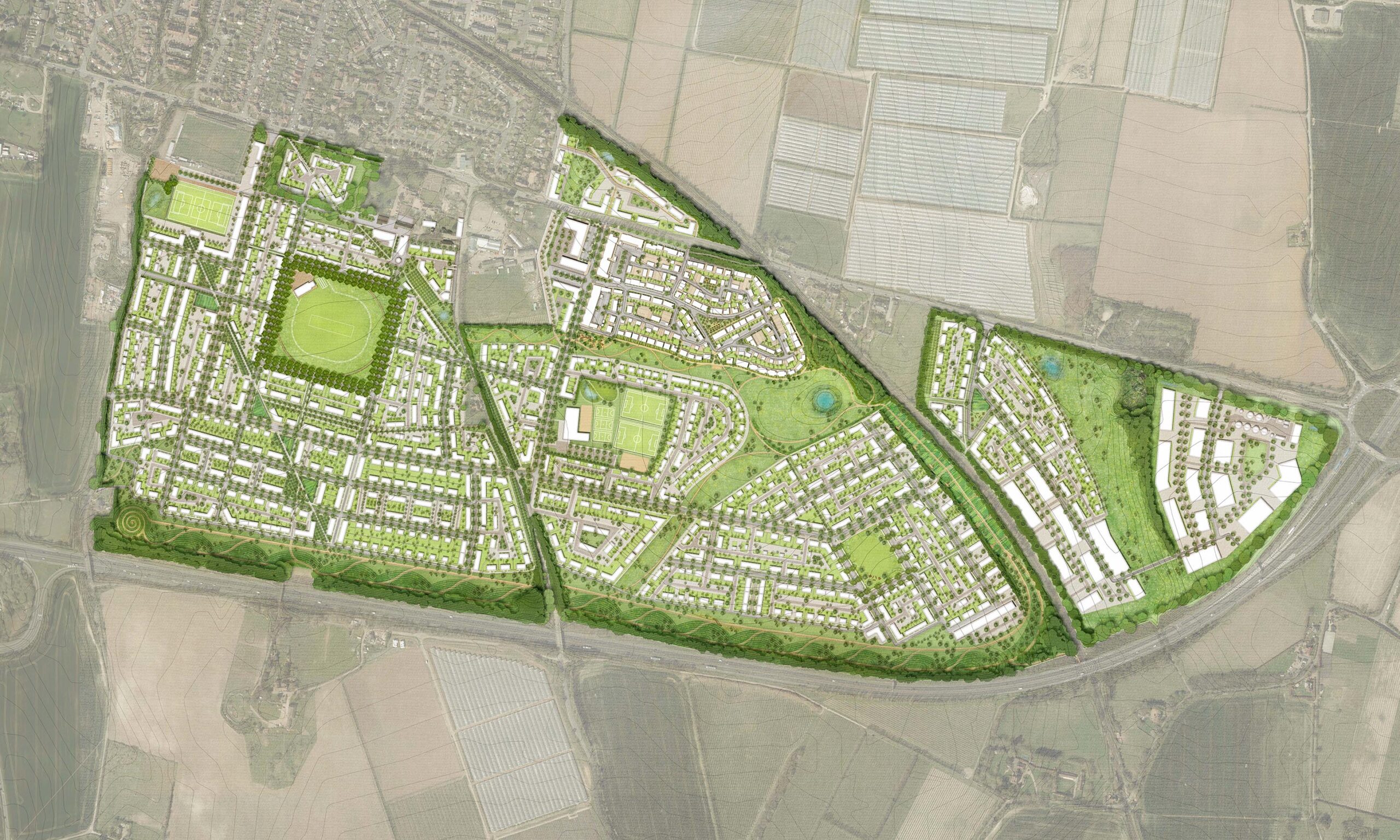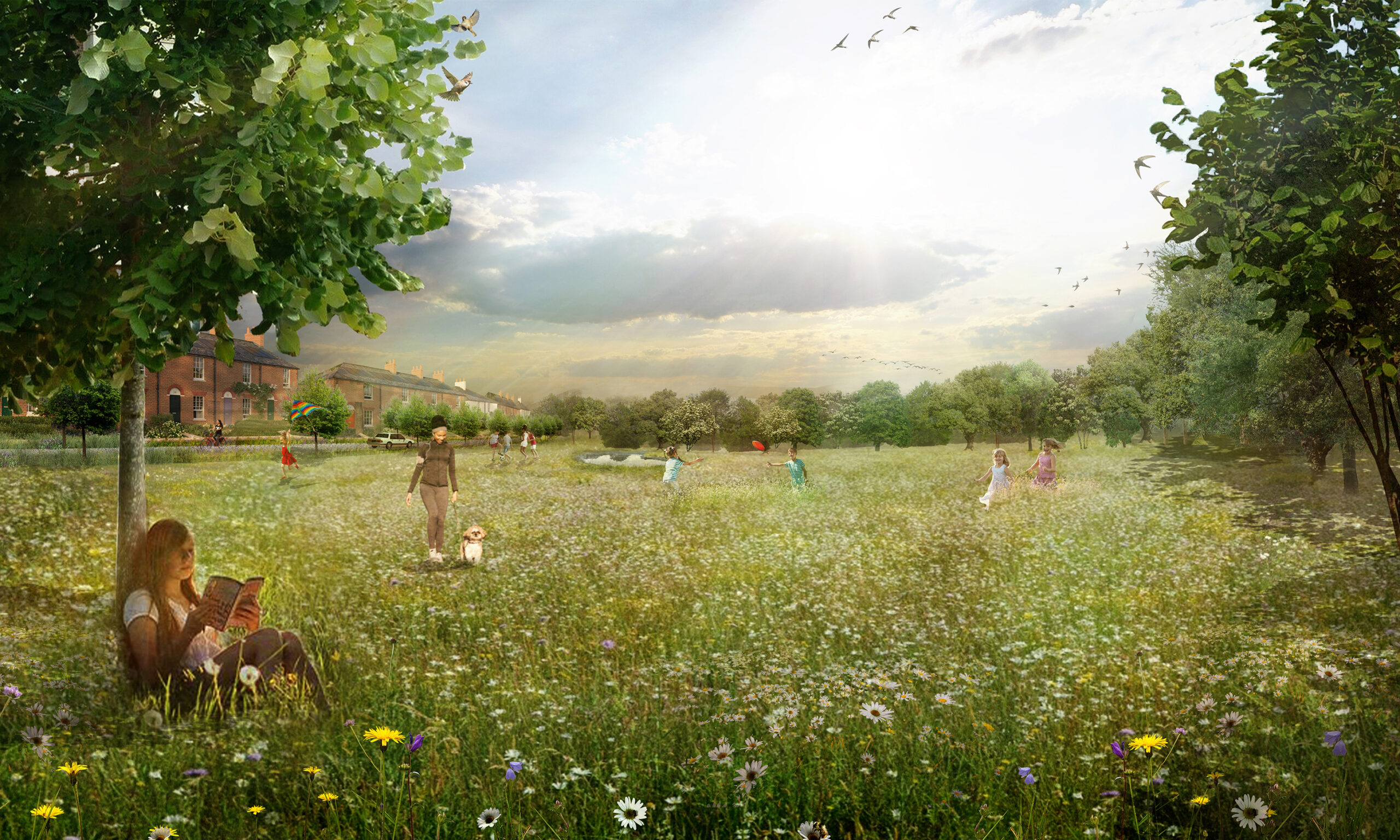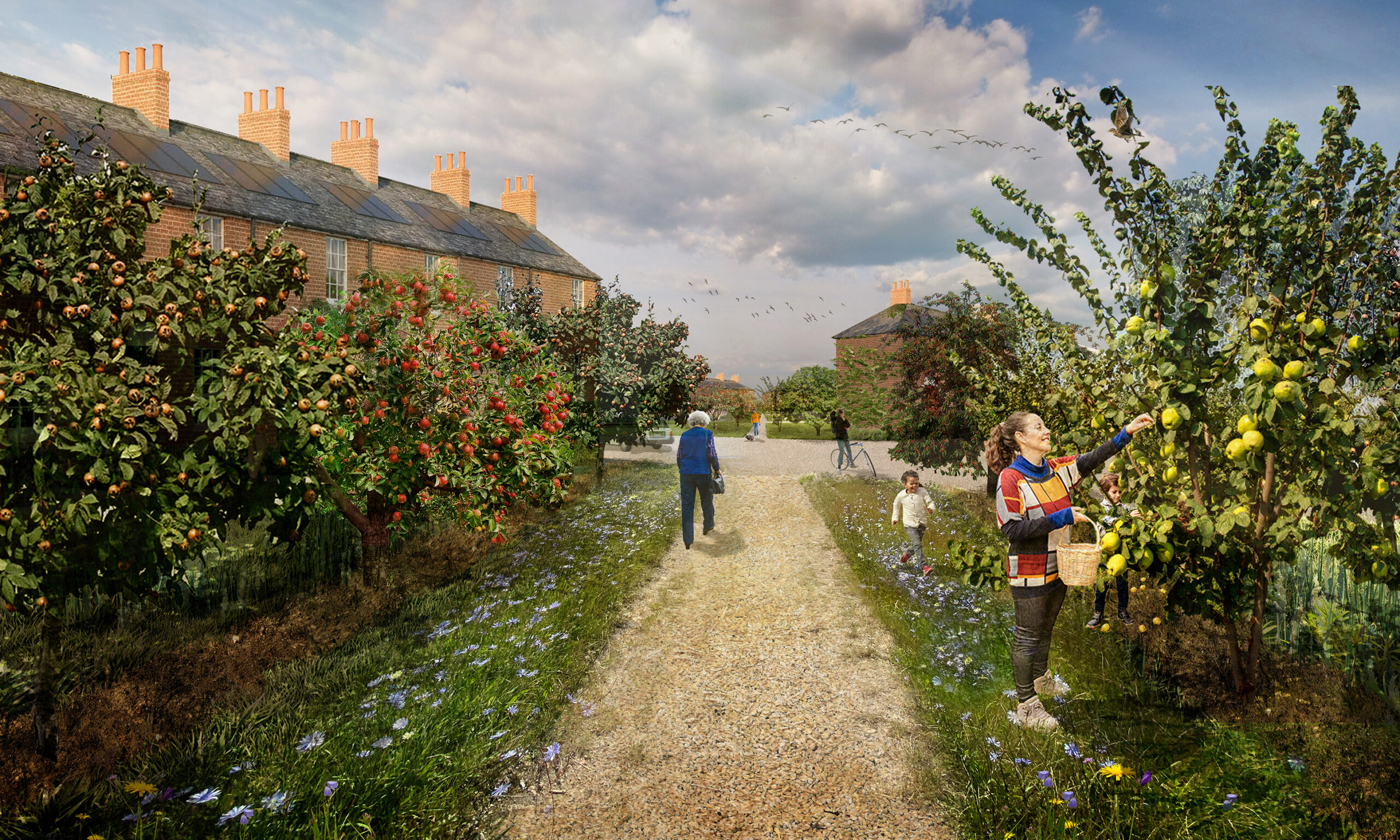South East Faversham Masterplan
Nurturing the Landscape: An Innovative Masterplan Rooted in Soil Health
Location: Faversham, Kent, UK
Client: The Duchy of Cornwall
Year: 2022-2023
Site Area: 135.7 hectares
Urban is working alongside the Duchy of Cornwall, Landscape Strategist Kim Wilkie, and Architect Ben Pentreath on the South East Faversham Masterplan. Our approach is rooted in a deep respect for the site’s history, especially the role of soil. We’re determined to make the most of this valuable resource in our ground-up design of the Illustrative Masterplan.
Our vision centres on creating large areas of species-rich grasslands that mimic the natural beauty of the North Kent Plain and Kent Downs Area of Outstanding Natural Beauty (AONB). We’re also using the soil to support a variety of green spaces. These include orchards for growing food sustainably, rolling landscapes for recreational activities, and thoughtfully placed trees that enhance streets and parks. These spaces have multiple uses, promoting active transportation, local food production, better mental well-being, and resilience to climate change. Our goal is to benefit both the future residents of the development and the cherished Faversham community.
The landscape design principles are deeply rooted in the site’s topography, a commitment to healthy soils, and the site’s historical connection with agriculture. These factors shape the hydrology, layout, and planting strategy. Traditional orchards are integrated into active travel routes, acknowledging the site’s heritage in the Faversham Fruit Belt Local Character Area. The urban layout is influenced by the gridded field pattern.
The project encompasses various urban and rural open spaces, ranging from naturalistic meadows to formal squares and play areas, catering to diverse uses, tranquillity, habitat preservation, and ecosystem services. This includes sports facilities, allotments, walking and cycling routes, and play spaces for all age groups.
Environmental responsibility guides the design, with extensive native tree and shrub planting, along with hydrology and grassland planting, creating a variety of habitats to maximize biodiversity. Tree planting contributes to the project’s Net Zero Carbon goal. Prioritizing active travel reduces car use, with pedestrian- and cycle-friendly routes enhanced by greenery and connectivity to amenities.
The landscape design also addresses climate adaptation, providing urban cooling through tree-lined streets and distributed green spaces. These features slow down surface water, which is directed to dew ponds as part of a site-wide Sustainable Drainage System (SuDS).








